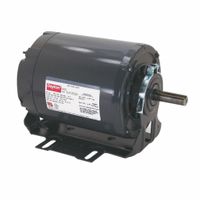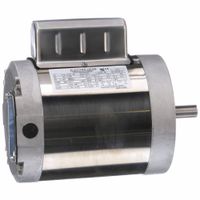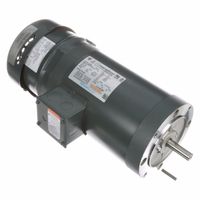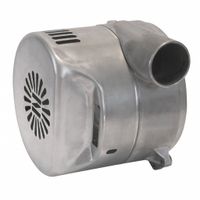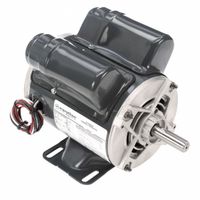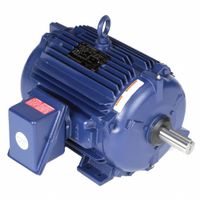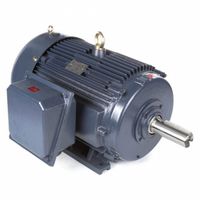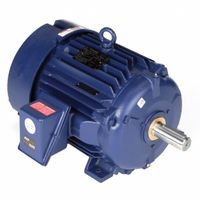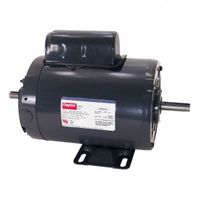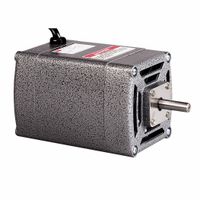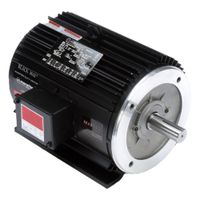Call +(254) 703 030 000 / 751 483 999 / 721 704 777
.....Read More
Frequently Asked Questions
What are definite-purpose motors?
Definite-purpose motors are electric motors designed and built to meet specific operational requirements for particular applications. Unlike general-purpose motors, which are versatile and used across various industries, definite-purpose motors are tailored for specific tasks, ensuring optimal performance, efficiency, and reliability in their designated roles.
These motors are engineered to handle particular environmental conditions, mechanical loads, or operational demands. For instance, they might be designed to withstand high temperatures, corrosive environments, or frequent start-stop cycles. Common applications include HVAC systems, pumps, compressors, conveyors, and other industrial machinery where precise motor characteristics are crucial.
Definite-purpose motors often feature specialized construction materials, unique cooling systems, or specific mounting configurations to suit their intended use. They may also have particular electrical characteristics, such as specific voltage, frequency, or phase requirements, to match the equipment they drive.
The advantages of using definite-purpose motors include enhanced performance, longer lifespan, and reduced maintenance needs, as they are optimized for their specific applications. However, they may be more expensive than general-purpose motors due to their specialized design and limited production volumes.
In summary, definite-purpose motors are essential components in industries where precise motor performance is critical, providing tailored solutions that ensure efficiency and reliability in specialized applications.
How do brake motors work?
Brake motors are electric motors equipped with a braking mechanism to stop the motor shaft quickly and hold it in place when power is removed. They are commonly used in applications where precise stopping and holding are required, such as in cranes, hoists, and conveyors.
The working of a brake motor involves two main components: the electric motor and the brake assembly. The electric motor provides the rotational force needed for the application. It operates like any standard motor, converting electrical energy into mechanical energy to drive machinery.
The brake assembly is typically mounted on the non-drive end of the motor. It consists of a brake disc, a friction lining, a spring mechanism, and an electromagnetic coil. When the motor is powered, the electromagnetic coil is energized, creating a magnetic field that pulls the brake disc away from the friction lining, allowing the motor shaft to rotate freely.
When power to the motor is cut, the electromagnetic coil is de-energized, and the spring mechanism pushes the brake disc against the friction lining. This action creates friction, which stops the motor shaft from rotating and holds it in place. The braking force is determined by the strength of the spring and the friction material used.
Brake motors are designed to provide quick and reliable stopping and holding capabilities. They are essential in applications where safety and precision are critical, preventing unwanted movement and ensuring controlled operation. The integration of the brake with the motor simplifies installation and maintenance, making brake motors a convenient solution for various industrial applications.
What is the difference between 50 Hz and 60 Hz motors?
The primary difference between 50 Hz and 60 Hz motors lies in their operating frequency, which affects their speed, design, and application suitability.
1. **Frequency and Speed**: The frequency of the power supply determines the synchronous speed of the motor. The formula for synchronous speed (Ns) is Ns = (120 × Frequency) / Number of Poles. Therefore, a 60 Hz motor will generally run faster than a 50 Hz motor with the same number of poles. For example, a 4-pole motor will have a synchronous speed of 1500 RPM at 50 Hz and 1800 RPM at 60 Hz.
2. **Design and Efficiency**: Motors are designed to operate optimally at their specified frequency. A motor designed for 60 Hz may not perform efficiently at 50 Hz, and vice versa. Operating a motor at a frequency different from its design can lead to increased losses, reduced efficiency, and overheating.
3. **Torque and Power**: The torque produced by a motor is proportional to the square of the voltage and inversely proportional to the frequency. Thus, a 60 Hz motor may produce more torque than a 50 Hz motor if operated at the same voltage. However, the power output (in watts) remains largely unaffected by frequency changes, assuming voltage and current are constant.
4. **Applications and Compatibility**: The choice between 50 Hz and 60 Hz motors often depends on the regional power supply standards. Countries like the United States use 60 Hz, while many European and Asian countries use 50 Hz. Equipment compatibility and availability of spare parts are also considerations.
5. **Mechanical Stress and Noise**: Higher frequency motors (60 Hz) may experience more mechanical stress and noise due to higher speeds, which can affect longevity and maintenance requirements.
In summary, the choice between 50 Hz and 60 Hz motors should consider the application requirements, regional power standards, and the specific design and performance characteristics of the motor.
What applications use instant reverse motors?
Instant reverse motors are used in applications where rapid changes in the direction of rotation are required. These applications include:
1. **Washing Machines**: Instant reverse motors are used to quickly change the direction of the drum's rotation during the wash and spin cycles, ensuring effective cleaning and rinsing.
2. **Conveyor Systems**: In industrial settings, these motors are used in conveyor systems to quickly reverse the direction of the belt for sorting, packaging, or redirecting products.
3. **Elevators and Escalators**: Instant reverse motors help in changing the direction of movement swiftly, ensuring smooth operation and safety in elevators and escalators.
4. **Electric Vehicles**: Some electric vehicles use instant reverse motors to enable quick changes in direction, which is essential for maneuvering and parking.
5. **Cranes and Hoists**: These motors allow for rapid directional changes in lifting and lowering operations, improving efficiency and control.
6. **Power Tools**: Certain power tools, like drills and screwdrivers, use instant reverse motors to quickly switch between forward and reverse operations for tasks like screwing and unscrewing.
7. **Robotics**: In robotics, instant reverse motors are used to enable quick directional changes, which are crucial for precise movements and tasks.
8. **HVAC Systems**: Some HVAC systems use these motors to quickly reverse fan directions for optimal airflow and temperature control.
9. **Printing Presses**: Instant reverse motors are used to change the direction of rollers quickly, aiding in the efficient handling of paper and other materials.
10. **Textile Machinery**: In textile manufacturing, these motors help in reversing the direction of looms and other machinery for efficient fabric processing.
These applications benefit from the ability of instant reverse motors to provide quick and reliable changes in direction, enhancing performance and operational efficiency.
How do vector (inverter) AC motors function?
Vector (inverter) AC motors function by using a combination of an inverter and vector control technology to precisely control the speed and torque of the motor. The inverter converts the fixed-frequency AC power supply into a variable-frequency AC power, which allows the motor to operate at different speeds. This is achieved by adjusting the frequency and voltage supplied to the motor, which in turn controls the motor's speed and torque.
Vector control, also known as field-oriented control (FOC), is a sophisticated method that involves controlling the motor's magnetic field to optimize performance. It works by decoupling the motor's torque and flux, allowing independent control of each. This is done by transforming the three-phase motor currents into a two-axis coordinate system (d-q axis) using mathematical transformations like the Clarke and Park transformations. The d-axis controls the magnetic flux, while the q-axis controls the torque.
The inverter uses feedback from sensors or estimators to monitor the motor's speed and position. This feedback is used to adjust the voltage and frequency output to the motor, ensuring precise control over its operation. The result is improved efficiency, better dynamic response, and reduced energy consumption compared to traditional AC motors.
Vector (inverter) AC motors are widely used in applications requiring precise speed and torque control, such as in industrial machinery, robotics, and HVAC systems. They offer advantages like smooth operation, reduced mechanical stress, and enhanced performance, making them a popular choice for modern motor control systems.
What are the benefits of using vibrator motors?
Vibrator motors offer several benefits across various applications:
1. **Efficiency**: Vibrator motors are highly efficient in converting electrical energy into mechanical energy, providing consistent and reliable performance in industrial applications.
2. **Versatility**: They are used in a wide range of applications, including material handling, construction, mining, and manufacturing, due to their ability to generate vibrations that facilitate processes like compaction, separation, and transportation.
3. **Compact Design**: These motors are typically compact and lightweight, making them easy to install and integrate into existing systems without requiring significant space or structural modifications.
4. **Durability**: Designed to withstand harsh environments, vibrator motors are built with robust materials that resist wear and tear, ensuring long service life even under continuous operation.
5. **Low Maintenance**: With fewer moving parts compared to other types of motors, vibrator motors require minimal maintenance, reducing downtime and operational costs.
6. **Adjustable Force**: Many vibrator motors allow for adjustable vibration force, enabling precise control over the intensity of the vibrations to suit specific application needs.
7. **Energy Savings**: By optimizing processes such as material flow and separation, vibrator motors can lead to energy savings, as they reduce the need for additional equipment or manual intervention.
8. **Improved Process Efficiency**: In industries like food processing and pharmaceuticals, vibrator motors enhance process efficiency by ensuring even distribution and consistent flow of materials.
9. **Noise Reduction**: Modern vibrator motors are designed to operate quietly, minimizing noise pollution in the workplace and contributing to a safer and more comfortable environment for workers.
10. **Cost-Effectiveness**: The combination of low maintenance, durability, and energy efficiency makes vibrator motors a cost-effective solution for many industrial applications.
Why are brushless blowers preferred for hand-held power tools?
Brushless blowers are preferred for hand-held power tools due to several key advantages that enhance performance, efficiency, and user experience.
Firstly, brushless motors are more efficient than their brushed counterparts. They use electronic commutation instead of mechanical brushes, reducing energy loss and heat generation. This efficiency translates to longer battery life and extended run times, which is crucial for hand-held tools that rely on battery power.
Secondly, brushless motors offer greater power and torque. The absence of brushes allows for more precise control of the motor's speed and torque, providing consistent performance even under heavy loads. This makes brushless blowers more effective in demanding applications, such as clearing debris or leaves.
Thirdly, brushless motors have a longer lifespan. The lack of brushes eliminates the wear and tear associated with friction, reducing maintenance needs and increasing the durability of the tool. This reliability is particularly important for professionals who depend on their tools for daily use.
Additionally, brushless blowers are quieter and produce less vibration. The smooth operation of brushless motors results in a more comfortable user experience, reducing fatigue during prolonged use. This is a significant advantage for hand-held tools, which are often used for extended periods.
Finally, the compact size and lightweight nature of brushless motors contribute to the overall ergonomics of hand-held power tools. This makes them easier to handle and maneuver, enhancing user control and precision.
In summary, brushless blowers are preferred for hand-held power tools due to their efficiency, power, durability, quiet operation, and ergonomic benefits, making them ideal for both professional and consumer use.
